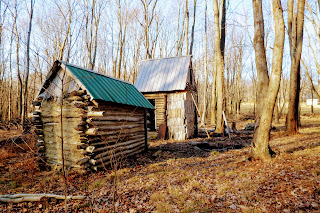About this time of year I start to use leaves as a mulch in the garden. Most of our leaves are Maple leaves. These are a good leaf to use as they break down quicker than Oak leaves. I think that most other types will probably also break down quickly like the Maple leaves.
My youngest son and my daughter are in charge of this task. They rake up the leaves in the yard behind our main garden into huge piles and jump into them for as long as they want to. When they get finished with their fun, they open up the big gate at the back of the garden and rake their piles into the garden.
After this we let them just sit there till about now when the ground has gotten colder, and we are expecting to get some really cold weather. Then we all go to work. We mulch around our strawberry patch first. We heap the leaves up a bit higher that the plants between the rows and around the patch. I did this quickly yesterday by just laying my small wheelbarrow on its side in the leaf pile and raking it full. Using the large leaf-rake as a clamp on the leaves I tipped the wheelbarrow up and get a nice load of leaves.
I then just wheeled them up to the patch and dumped them as I moved the wheelbarrow back. I don't like to cover the tops of the strawberries completely. I think they do better if they get to breathe a bit through the winter. I also use hardy varieties, Ozark Beauty and Fort Larmie berries. These are tough plants that will live through our Western Pennsylvania winters without mulch, but they do much better with my leaf mulching, plus the leaves keep the weeds down between the rows, big time.
After I leaf mulch the strawberries, I lock the chickens out of the garden. They love to scratch in the leaves, and will break up the mulch too much.
I also much around my rhubarb plants about the same time. I fertilize the rhubarb with wood ashes and cow manure prior to the mulching, so I like to let the manure and ashes get rained on and weathered into the soil for about a month or so before I apply the mulch pretty much the same as I do for the strawberry patch. I never fertilize the strawberries; they don't need it.
 |
| Rhubarb with manure and ashes; it will get the leaves in a few weeks. |
I scatter the leaves that I have left over in various spots around the garden. If I have a lot, I will put some on the path between the red and black raspberries. Which I against all advice have had in the same vicinity for ten years with no problems. They both grow and bear like crazy.
I also keep a reserve pile near the gate in case we get some serious winds that scatter the mulch too much. It has to be serious wind to do this. It is not too uncommon for us to get 40 to 50 miles per hour winds up here on the mountain, and usually the mulch stays put. Sometimes if it is going to be 10 or more degress below zero - Fahrenheit, I will sprinkle the tops of the strawberries and with some leaves. Usually not the rhubarb though. It just kind of dissappears as the winter gets worse, and I don't pay much attention to it.
Anyway, the leaves are free, effective, easy to work with and organic. I can't understand why I drive through neighborhoods and see black plastic garbage bags full of leaves ready for garbage/landfill pick-up. Every kid should have their own strawberry patch in their back yard. That's some environmentalism I could get behind.

















































